How to choose the right airless spray tip in 3 steps
Follow an easy 3-step approach to choosing the right spray tip for any spray job.
Even if it is only a tiny part of your airless spray system, a tip largely determines the quality of your work. Graco uses a colour coding system and three-digit codes to identify tip types. But how to know exactly which tip you need for a particular spray job? Read how to choose the right tip in 3 steps.
Using the right spray tip is critical. On top of achieving a better spray quality, it saves you from wasting material and makes you work faster. Did you already crack the code each Graco tip is marked with? Great, then have a look at our 3-step plan to make sure you choose the right tip for your specific airless spraying application.
- Step 1: Your application determines the colour of the tip
- Step 2: Your desired fan width determines the first number of the three-digit code
- Step 3: Your desired material output determines the last two numbers of the three-digit code
Step 1: Application
Graco tips for airless sprayers come in different colours. Based on the colour of the tip, you will know immediately which tip is best suited for your application.
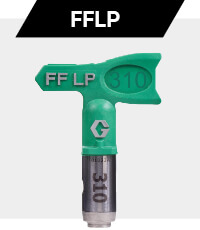
For fine finish applications with thin material at the lowest pressure

For every interior and exterior paint job at the lowest pressure
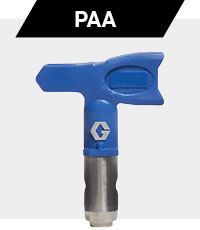
For every interior and exterior paint job
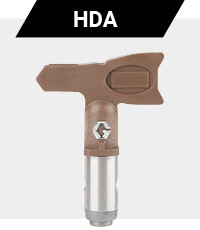
For thin plastering and less fluid materials
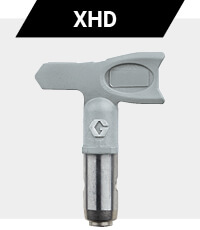
For protective coatings – up to 500 bar

For marking and striping applications
Step 2: Fan width
The fan width is determined by the angle when spraying 30 cm from the surface. The larger the fan width the faster you can work, but it comes with a higher material consumption. When spraying in smaller fan widths you use less material and have more control.
Choose your preferred fan width in centimetres and divide it by 5. The result corresponds with the first number of the three-digit code printed on each tip. So, if you want a 15 cm fan width, the first number of the three-digit code is 3 (as 3 x 5 = 15 cm). If you want a 35 cm fan width, the first number is 7 (as 7 x 5 = 35 cm).
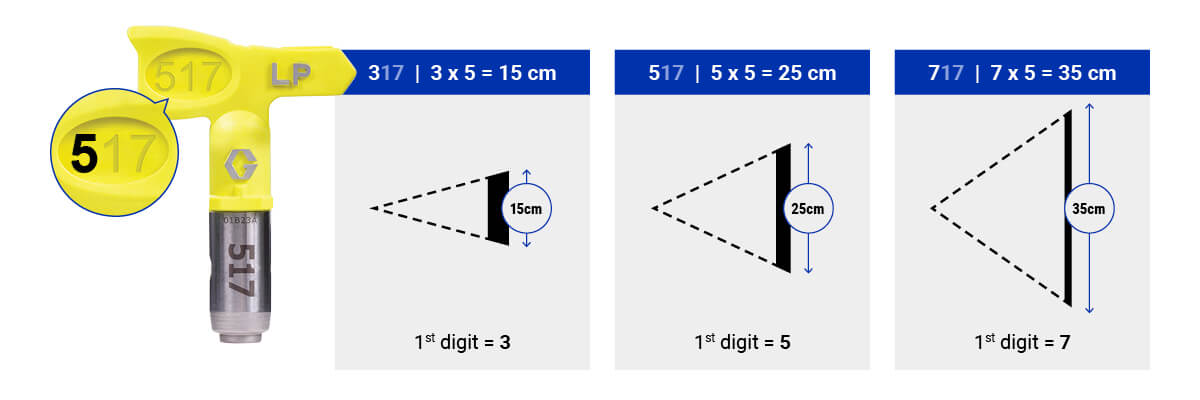
The higher the first number, the larger the fan width, the bigger the surface you spray.
Step 3: Material output
Now you need to know what orifice size the tip needs. The orifice size (indicated in one thousands of an inch, e.g. 0.017) determines the material output. The higher the number, the more material can be sprayed through the tip. Thicker materials also require a larger orifice size. Many material manufacturers specify recommended spray tip orifice sizes on the container or product specification sheet. View some common orifice sizes per material.
Choose an orifice size rated for the material you’ll be spraying and the material output you want. The size of the spray orifice is shown by the last two numbers of the three-digit code: ‘17’ matches an orifice of 0.017 inch.
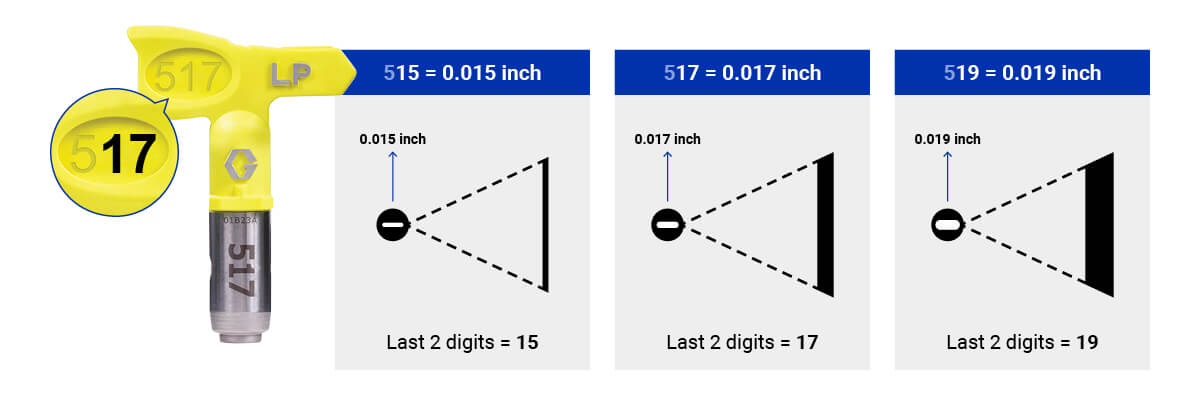
The higher the last two numbers, the larger the orifice size, the higher the material output.
Always check if your chosen orifice size is compatible with the maximum tip size of your sprayer. Consult the table containing the tip sizes for each sprayer.
| Minimum orifice size | Maximum orifice size | |
|---|---|---|
| Ultra Handheld | 0.008 | 0.016 |
| Ultra QuickShot | 0.008 | 0.016 |
| GX FF | 0.006 | 0.019 |
| GX 21 | 0.006 | 0.021 |
| Classic 390 | 0.006 | 0.021 |
| ST Max 395 | 0.006 | 0.023 |
| Classic S / ST Max 495 | 0.006 | 0.025 |
| ST Max / FinishPro 595 | 0.006 | 0.027 |
| UltraMax II 695 | 0.012 | 0.031 |
| UltraMax II 795 | 0.012 | 0.033 |
| UltraMax II 1095 | 0.012 | 0.035 |
| Mark IV (paint) | 0.012 | 0.033 |
| Mark V (paint) | 0.014 | 0.037 |
| Mark V (plaster) | 0.027 | 0.037 |
| Mark VII (paint & plaster) | 0.027 | 0.047 |
| Mark X (paint & plaster) | 0.027 | 0.051 |
| APX 6200 | 0.019 | 0.051 |
| APX 8200 | 0.019 | 0.057 |
| T-MAX 506 | 0.023 | 0.051 |
| T-MAX 657 | 0.023 | 0.061 |
| T-MAX 6912 | 0.023 | 0.071 |
| GMAX 3900 | 0.014 | 0.035 |
| GMAX 5900 HD | 0.014 | 0.043 |
| GMAX 7900 | 0.015 | 0.047 |
| T-MAX 657 | 0.023 | 0.061 |
| DutyMax EH 230 | 0.015 | 0.039 |
| DutyMax EH 300 | 0.015 | 0.063 |
Good to know!
Applied material too thick or too thin? Use a tip with a different orifice size or fan width
Try out different tips to get a better feel for which tip best matches your application.
Example: You have a 517 tip, which has a 25 cm fan width (5 x 5 = 25) and has a 0.017 inch orifice (represented by the 2 last digits, 17). This results in a particular material thickness.
- Is the sprayed material too thick?
Use a smaller tip orifice (515 instead of 517) OR increase the spray angle (717 instead of 517).
- Is the sprayed material too thin?
Use a larger tip orifice (519 instead of 517) OR decrease the spray angle (317 instead of 517).
Need some help?
Do you need some more information on finding the right spray tip? Don’t hesitate to get in touch with your dealer or Graco representative to get an answer.
Related Articles
An introduction to Graco airless spray tips
Understanding Graco spray tips is all about colours and codes. Dive in to this comprehensive introduction.
How to install your airless spray tip
Look into the video on how to insert a spray tip into a guard, and get started with that spray job without risking drips or leaks.
5 benefits of Graco’s low pressure (LP) airless spray tips
Graco’s low pressure airless spray tips make you spray at half the pressure while getting top spray results and extend the life of tips 2 times.

